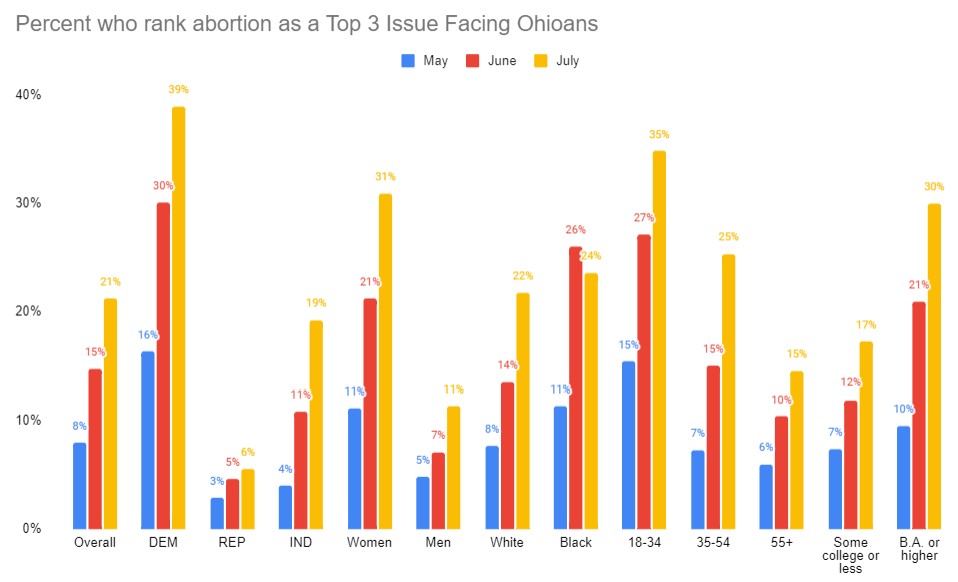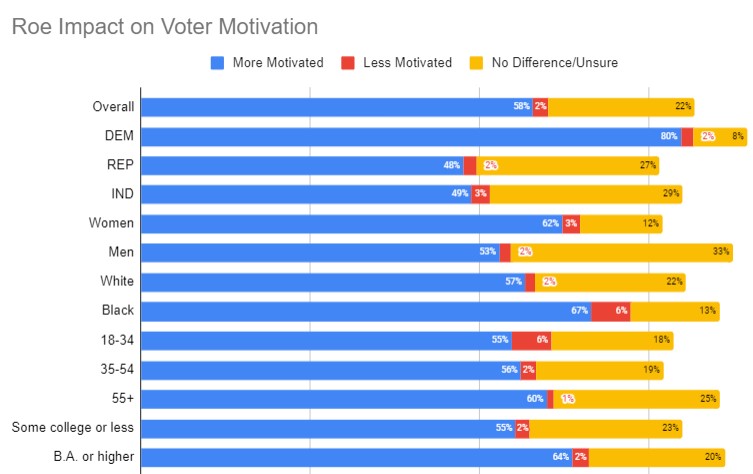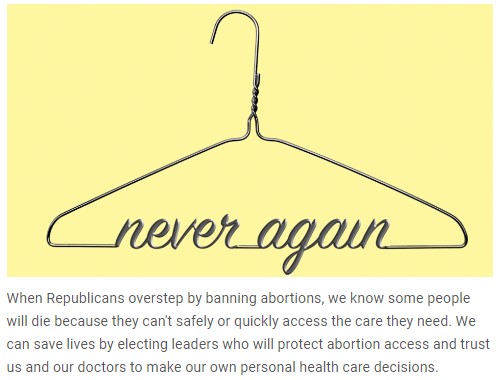In our monthly tracking polls, crime has steadily risen as a top concern among voters. The issue was named as one of the top 3 issues facing Ohioans by 24.3% respondents this month placing crime and safety behind only Inflation and the Economy in our poll. That’s an increase over the 19.8% of voters who ranked crime as a top issue in our poll a year ago, when it ranked 5th among issues facing the state.
Concerns about safety cut across demographics and party affiliation, but tend to skew higher with age and lower with education. Crime and safety is the 3rd highest ranking issue overall and for men and voters over 55; 4th for women and voters 35-54; 5th for Black voters and young voters.
We saw this again in a statewide poll about judicial races conducted in June. In their responses, voters identified “tough on crime” and “smart on crime” as the two most compelling qualities in a prospective judge. 77% of poll respondents, including 65% of Black voters, 62% of urban voters and 79% of suburban voters say they are more likely to support a candidate who is “tough on crime”. The numbers were similar, but a few percentage points lower, for a “smart on crime” candidate. No other candidate quality scored as highly.
To understand why so many voters identify crime and safety as a concern, we probed further in our August poll, asking about types of criminal behavior they’re concerned about. Overall, property crimes (such as vandalism and theft) topped the list, with 44% calling it a concern, followed by 41% who pointed to drug-related crimes and 41% who named violent crime. 25% of respondents pointed to corporate crime like bribery and wage theft, while 19% said they weren’t particularly concerned about crime. Property crimes were the top issue for Independent and young voters, and drug crimes topped the list for Republicans. But for Democrats, Black voters, men and older voters, violent crime (things like assault and murder) was the top area of concern.
We wanted to hear more from voters in their own words. Earlier this month, we conducted an Audience Understanding Survey – an online focus group using the GrowProgress platform – in which just under 600 registered Ohio voters were asked multiple-choice and open-ended questions about their opinion on the statement “crime is a major issue in my community that elected officials need to address”. Over half of respondents said they agreed – 32% strongly agreed and another 25% somewhat.
Digging into the responses, we learned several things:
The belief that crime and safety is an important issue that officials should address extends across party, race, gender and age. That said, voters who were the most concerned tended to be more female, younger, less educated, more urban, more Black, more likely to vote Democratic and more likely to call themselves moderates than respondents who told us they felt safety concerns were overblown.
Many of our respondents describe first-hand experiences with crime or referred to media reports suggesting crime was on the rise locally. Most open-ended responses mentioned violent crimes, often involving guns, but also property crimes such as vehicle theft. Respondents said they didn’t hear much from politicians about crime and public safety and expressed the view that officials are either out of touch and unaware of safety concerns, or are afraid to talk about them for political reasons. Voters suggested policy remedies that ranged from more funding and more effective policing, but just as many respondents voiced concerns about the underlying causes of crime such as poverty and insufficient job opportunities. This group also mentioned the widespread availability of guns as a contributor.
The voters least likely to express concerns about crime in our survey tended to be older, whiter, more suburban and rural, less likely to attend religious services, lean conservative and voted for Trump. They told us the reason for their opinion was that crime was low in their communities.
Message Guidance
Progressives and progressive candidates should not shy away from the issue of safety and justice. Acknowledge people’s real fears and discuss the variety of underlying causes of crime and lack of safety in the community. Voters are most interested in understanding a candidate is not out of touch and not afraid to talk about safety.
In addition to acknowledging safety concerns and being open to addressing the root causes of crime, progressives should also center the victims of crime. In particular, when speaking about Republican elected officials, consider characterizing them as “tough on victims.” Specific proof points include:
- Limits on jury awards that mean victims can’t get the compensation they deserve
- Refusal to extend the statute of limitations so old rape cases where DNA evidence is now available cannot be prosecuted
- Denying leniency to victims of human trafficking, even when acting in self-defense against their traffickers.
- Laws that send rape and incest survivors out of state when they need an abortion
Here are some messages that we tested that are effective in persuading voters against republican opponents using a victims-first framing:
Message 1: Tough on Victims
When a 10-year-old rape victim was forced to flee to Indiana to end her pregnancy because of Ohio’s no-exceptions abortion ban, Republican politicians accused the child of being liar. They engaged in a nationally-televised smear campaign against a little girl. Republicans aren’t tough on crime, they’re tough on victims.
Test Results:
- Decreased GOP favorability by 10 points overall – particularly effective with independents (-19), low income voters (-18), moderates (-15), men and voters 55 and up (both -14), ruralites (-13), white voters and suburbanites (both -12), and 35-54 year olds (-11)
- Increased vote choice for Democratic judges by 4 points overall – particularly effective with low-income voters (+8)
Message 2: Divide and Conquer
MAGA Republicans Kennedy, DeWine, and Fischer talk about crime to divide our communities by race, income, and where we live. The truth is we all want our families to be safe from violent crime. These candidates for the Ohio Supreme Court want to keep us all blaming each other while they offer no real solutions to keep us safe from violent crime.
Test Results:
- Increased vote choice for Democratic judges by 5 points overall – particularly effective with voters aged 35 – 54, independents and low turnout voters (all +15)
- Decreased GOP favorability by 4 points overall – particularly effective with men and independents (both -12), voters 55 and over and suburbanites (both -11)
Message 3: Corporate Crime
The MAGA Republicans running for Ohio Supreme Court say they’re tough on crime, but they look the other way when the corporate criminals who fund their campaigns steal millions from Ohioans through bribery and fraud. They’re soft on crime when rich criminals donate.
Test Results:
- Increased vote choice for Democratic judges by 4 points overall – particularly effective with independents (+12) and ruralites (+11)
Message 4: Soft on Crime
The MAGA Republicans running for Ohio Supreme Court have a track record of making it easier for criminals to get their hands on guns, and of overturning verdicts to make pedophiles compensate their victims for pain and suffering. They are doing nothing to protect our communities from violent criminals.
Results:
- Increased vote choice for Democratic judges by 5 points overall – particularly effective with people who voted Democratic in 2020 (+12), people outside the largest media markets (+9), independents, suburbanites and men (all +8)
- Decreased GOP favorability by 6 points overall – particularly effective with independents and suburbanites (both -15), men, moderates and people outside the largest media markets (all -14), low income voters (-12) and white voters (-10).










